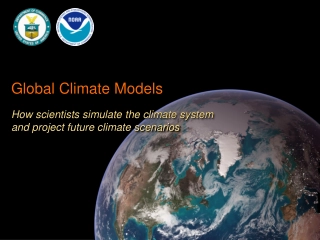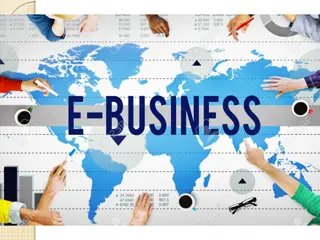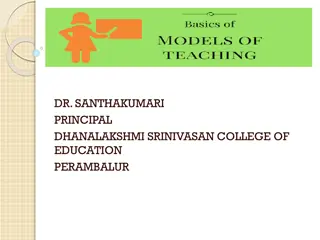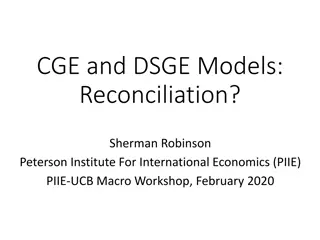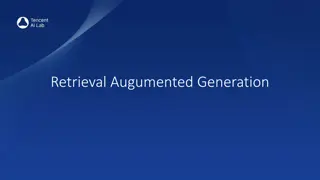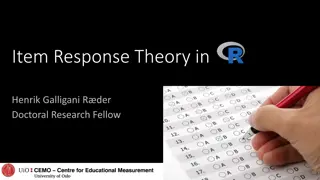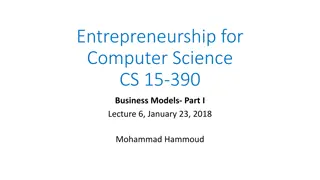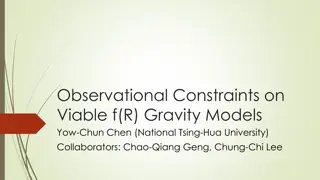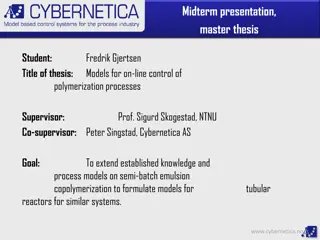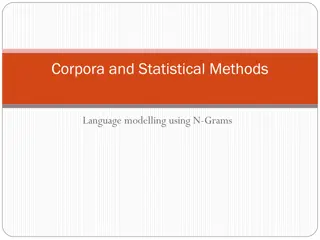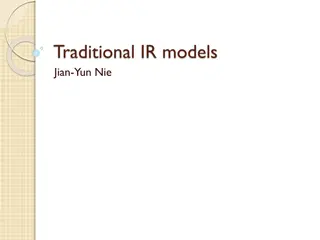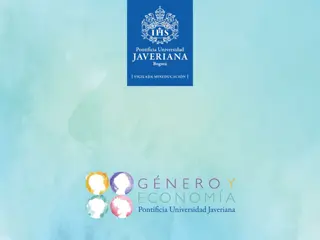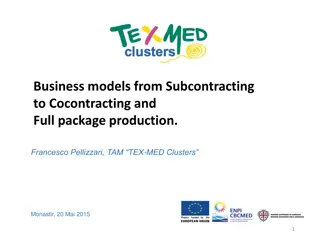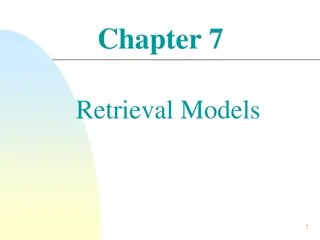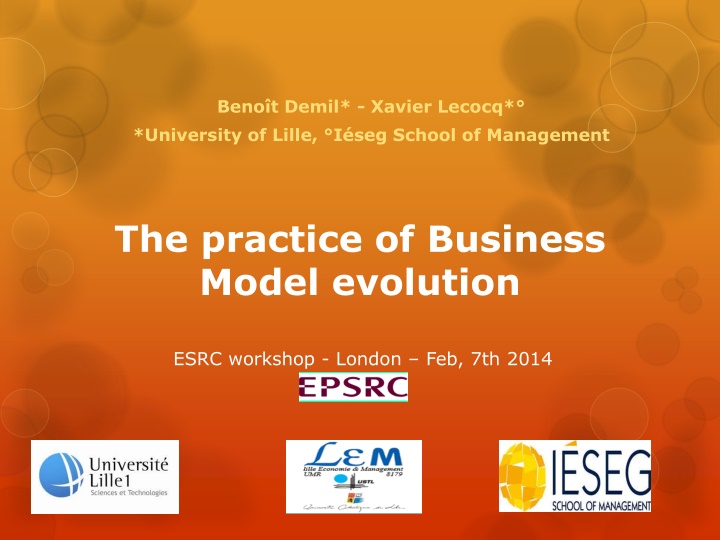
Evolution of Business Models: Sociomaterial Framework in Practice
Explore the evolution of business models through the lens of a sociomaterial framework. This research delves into changing established company models, focusing on the role of actors in crafting artifacts for business model transformation. Case study on SEB, a global leader in household electrical goods, undergoing radical changes in its business model towards servitization and individualization.
Download Presentation

Please find below an Image/Link to download the presentation.
The content on the website is provided AS IS for your information and personal use only. It may not be sold, licensed, or shared on other websites without obtaining consent from the author. If you encounter any issues during the download, it is possible that the publisher has removed the file from their server.
You are allowed to download the files provided on this website for personal or commercial use, subject to the condition that they are used lawfully. All files are the property of their respective owners.
The content on the website is provided AS IS for your information and personal use only. It may not be sold, licensed, or shared on other websites without obtaining consent from the author.
E N D
Presentation Transcript
Benot Demil* - Xavier Lecocq* *University of Lille, I seg School of Management The practice of Business Model evolution ESRC workshop - London Feb, 7th 2014
RESEARCH QUESTION Business model is a model (Baden-Fuller and Morgan, 2010) of an actual or future state but need to move beyond the cognitive and conceptual dimensions. Several research on business model change, evolution and implementation (e.g. Demil and Lecocq, 2010; Doganova and Eyquem-Renault, 2009; Svejenova et al., 2010; Sabatier et al., 2010; Trevinyo-Rodriguez et al., 2010), but generally: A posteriori studies, Lack of attention to micro-processes and to materiality, Focus on revolutionary business model (radical change) from de novo companies (Amazon, Google ). RQ: How to make a business model evolving? 2
A SOCIOMATERIAL FRAMEWORK Lens of sociomateriality (e.g. Orlikowski, 2007; Orlikowski and Scott, 2008; Leonardi, 2012) considers jointly: the material dimension of reality (i.e the role of artifacts in defining and shaping the reality) the social dimension of reality (i.e. the representations, practices and interactions around artifacts) ANT is a sensibility to the messy practices of relationality and materiality of the world (Law, 2008, p. 142): the world is a network of human and non-human actors (actants) ; things acquire a sense through their connections. 3
OUR ASSUMPTIONS IN THIS RESEARCH Changing a business model in an established company supposes to modify a lot of constituents (products, resources, organization, partnerships, competencies...). In order to do so, we speculate that actors are crafting various artifacts in order to contribute to business model change business model change requires the creation of a network of artifacts to advent (i.e. artifacts and practices around artifacts). 4
EMPIRICAL FIELD SEB : worldwide leader company in the household electrical goods. 25.000 employees and a turnover of 4 billions. A rich history of technological innovations and strong trademarks. SEB is trying to change radically the business model of its Kitchen Electrics Business (KEB) Unit and to eventually implement this new business model into other SBU : toward servitization, individualization and openness. 5
THE SEB COMPANY 6 world trademarks Traditional business model : Regular technological innovations (incremental and radical), TV advertisement, Retail chains and dealers Value located in the products Main function of the products: transforming ingredients into a result 18 local trademarks France / Belgique Am rique du Nord Am riques Sud & Nord / Japon / Afrique du Sud Asie Am rique du Sud Am riques Sud & Nord 6 Am rique du Sud
PRELIMINARY EMPIRICAL RESULTS A long (and ongoing) process (since 2005) triggered by different (r)evolutions : retailing (Amazon), digitalization of the economy, new competitors (Google cuisine) How it will impact our business? There is a general model (digitalization) but no existing model to imitate or adopt. A cognitive reasoning may be led concerning the elaboration of a new business model (products + services; connected products; from recipe to nutrition) but the transition towards unknown territories is much more complex empirically. Definition and implementation of a new business model can be assimilated with a learning process (trials and errors) in which new artifacts trigger sense-making. In an established company, actors face multiple tensions (as in any innovation process) : 1) Producing artifacts to create the new business model, but make sure that the situation is reversible Seb et son Foodle exasp rent les blogueurs cuisine 2) Avoiding the cannibalization of the current business model in the short run 3) Investing in exploration but focusing progressively on return on investment 7 4) Numerous and disparate initiatives but needed convergence
5 SOCIOMATERIAL PROCESSES TO CRAFT A NEW BUSINESS MODEL Bridging an old and a new business model is realized through different processes related to materiality : Creating new artifacts within and outside the organization (e.g., software) Modifying some existing artifacts (e.g., P&L) Eliminating existing artifacts (e.g., norms of profitability) Generating new connections between actants (e.g., community, partnerships) Changing the sense attached to new or existing artifacts (e.g., an app as a communicative tool, investments or charges) 8
CONTRIBUTIONS Avoiding a posteriori observation of the emergence of business model through longitudinal studies, starting with the initial project (especially because sensemaking is changing): crafting vs. adopting views Entanglement between sociomaterial and cognitive dimensions of change: new artifacts triggers interpretations and vice-versa; cognition is embedded in and reinforced by artefacts. Artifacts created during the process of business model change are progressively connected together to create consistency in the new reality. Business model as a blueprint can only be defined a posteriori as it appears to result from sensemaking (Weick, 1995). 9



